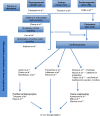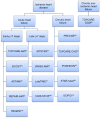Cardiac tissue engineering and regeneration using cell-based therapy
- PMID: 25999743
- PMCID: PMC4437607
- DOI: 10.2147/SCCAA.S54204
Cardiac tissue engineering and regeneration using cell-based therapy
Abstract
Stem cell therapy and tissue engineering represent a forefront of current research in the treatment of heart disease. With these technologies, advancements are being made into therapies for acute ischemic myocardial injury and chronic, otherwise nonreversible, myocardial failure. The current clinical management of cardiac ischemia deals with reestablishing perfusion to the heart but not dealing with the irreversible damage caused by the occlusion or stenosis of the supplying vessels. The applications of these new technologies are not yet fully established as part of the management of cardiac diseases but will become so in the near future. The discussion presented here reviews some of the pioneering works at this new frontier. Key results of allogeneic and autologous stem cell trials are presented, including the use of embryonic, bone marrow-derived, adipose-derived, and resident cardiac stem cells.
Keywords: cardiac surgery; cardiomyocytes; cell sheet and tissue engineering; heart; heart failure; myocardial ischemia; organoids; scaffolds; stem cells.
Figures



References
-
- Beltrami AP, Urbanek K, Kajstura J, et al. Evidence that human cardiac myocytes divide after myocardial infarction. N Eng J Med. 2001;344(23):1750–1757. - PubMed
-
- Reddi AH, Huggins CB. Influence of geometry of transplanted tooth and bone on transformation of fibroblasts. Proc Soc Exp Biol Med. 1973;143(3):634–637. - PubMed
-
- Ott HC, Matthiesen TS, Goh SK, et al. Perfusion-decellularized matrix: using nature’s platform to engineer a bioartificial heart. Nat Med. 2008;14(2):213–221. - PubMed
-
- Paschos NK, Brown WE, Eswaramoorthy R, Hu JC, Athanasiou KA. Advances in tissue engineering through stem cell-based co-culture. J Tissue Eng Regen Med. 2014 Feb 3; Epub. - PubMed
Publication types
LinkOut - more resources
Full Text Sources
Other Literature Sources

